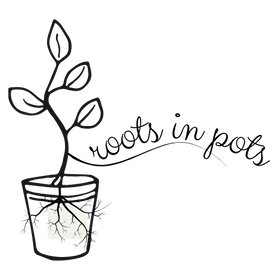· By Shawne Huff
Pot Swap Culture: How the Vessel Changes the Plant’s Story
At first glance, a pot is just a pot. Functional. Decorative. Something to hold your plant and keep the soil from spilling all over the floor. But in the world of plant lovers, pots are more than containers—they’re characters. Co-stars. Sometimes, even the lead.
Welcome to Pot Swap Culture—where switching a plant’s pot isn’t just a design choice; it’s a transformation of mood, meaning, and sometimes even health.
The Vibe Shift: Pots as Personality
Changing the pot is like changing the outfit. A trailing Pothos in a matte black cylinder? Moody minimalism. The same plant in a vintage terracotta urn? Suddenly it’s Mediterranean cottagecore. Drop it into a bubblegum pink ceramic with legs? Quirky, playful, almost cartoonish.
The vessel shapes how we feel about the plant. It frames it, elevates it, and tells a different visual story. That’s why repotting can be addictive—not just because your plant needs space, but because it’s an invitation to reimagine your whole aesthetic.
For plant parents, swapping pots is a creative ritual. It’s style-meets-soil. A small, sacred act of re-curation. And in our homes, where plants are both décor and life force, the pot becomes part of the atmosphere we’re cultivating. Peaceful? Bold? Earthy? Glamorous? Change the pot, and you change the energy.

Function Meets Fashion: What Your Plant Needs
Of course, beneath the aesthetic fun lies something much more important: the right pot can mean the difference between a thriving plant and a stressed-out one.
Drainage holes, material type, size aren’t just technical specs; they’re survival tools.
-
Drainage is key. A cute pot with no drainage can trap water at the roots, leading to rot. Unless you're using it as a cache pot (more on that in a minute), no drainage = no peace.
-
Porosity matters too. Terracotta absorbs moisture, helping the soil dry out faster—great for plants that like to dry between waterings (hello, succulents and snake plants). Glazed ceramics or plastic pots retain moisture, which is better for tropicals or thirsty friends like ferns.
-
Size plays a big role. If it is too small, your plant may become rootbound and nutrient-starved. Too big, and the soil may stay wet too long, causing root issues.
So while we love a statement pot, it must work for your plant’s biology—not just your bookshelf.
The Cache Pot Hack (aka Fashion Without Sacrifice)
Let’s discuss the plant stylist’s secret weapon: the cache pot. This is when you keep your plant in a functional nursery pot (with great drainage), and drop it into a prettier outer pot.
It’s the best of both worlds—function + flair. Plus, it lets you swap the pot to suit your mood, season, or décor, without disturbing the roots. Want to go neutral in the winter and switch to color for spring? Easy. Hosting a party and want to match the table vibe? Done.
Cache pots make the whole idea of Pot Swap Culture more flexible—and honestly, more fun.
Symbolism and the Container Story
There’s something deeply symbolic about the relationship between plant and pot. The vessel gives structure and support, but it’s also a constraint. And yet, from that structure, growth happens.
When we change the pot, we sometimes do more than restyling or rescuing a rootbound plant—we’re acknowledging a shift. Maybe we’ve outgrown a phase. Perhaps the plant reminds us of someone or something we’re ready to let go of—or lean into. Maybe we need a change. A fresh look. A little movement.
Our plants reflect our lives in many ways. Repotting becomes a metaphor: you can stay rooted and still change your container.

Swapping Pots, Swapping Stories
Pot swaps don’t just happen at home. They’re becoming a thing in plant communities, too—local plant groups and markets where people bring in their old pots to trade, gift, or find something new.
It’s sustainability. It’s creativity. It’s connection. One plant parent’s discarded planter is another’s perfect vessel.
At Roots in Pots, we’re all about that philosophy: that the pot matters. What you put your plant in isn’t just decorative—it's deeply personal. And it’s okay to change your mind, color scheme, and vibe. Your plant won’t judge. It just wants to grow.
A Final Rooted Thought
So, next time you repot a plant, pause for a moment. Notice how the new pot changes everything—how it makes you see the plant differently, how it makes you feel differently.
The plant is the same—and yet, it’s not, just like us.
Because in the end, the pot isn’t just a container. It’s part of the story. And in the world of plants, the story is always growing.

